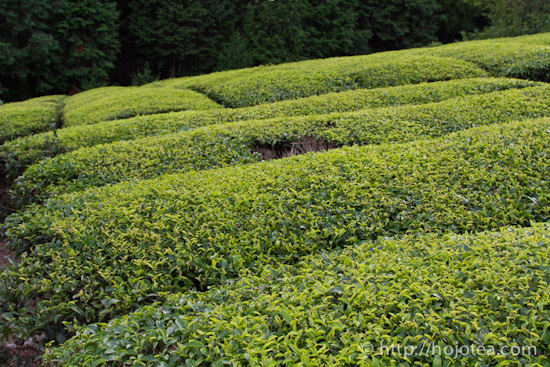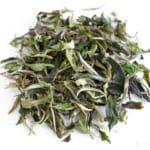- HOME >
- Tea Column
Why do elderly people miss the tea they drunk before?

The elderly people sometimes mentioned that the tea they used to drink when they were young was much nicer. Some people may assume that it is just their nostalgic sentimentality. Somehow I do believe in what they say and would like to share some information.
The usage of nitrogen fertilizers have increased 12 times since 1950s onwards
Before 1950, the tea agricultural method was totally different from the current method. The economy of Japan has grown rapidly from 1950 onwards, resulting in drastically increased demands of vegetable and fruits as well as tea. At that time, Japanese government effectively promoted the use of pesticides and fertilizers to cope with the output and meet the increasing demand. The so-called modern agriculture has now widely followed.
The following report was prepared by the ministry of agriculture
Please refer to No.6. Unfortunately it is in Japanese. The title of No.6 is “The impact of excess application of Nitrogen in the tea garden and measures”. In the report, we can see that there is a drastic change in the agricultural method. Please refer to the first linearly graph.The 窒素施容量 means usage of nitrogen fertilizer. The 生産量 means production output.
http://www.maff.go.jp/j/seisan/kankyo/nenyu_koutou/n_kento/pdf/3siryo4.pdf
- Before 1940, the average nitrogen fertilizer used for 100 sqm of tea garden was 10kg
- In the later half of 1940s, the usage of nitrogen fertilizer has drastically increased. In 1950s, the usage has reached to 120kg per 100 sqm which was 12 times the quantity to that of the earlier usage.
- In the tea garden, the lane between the rows of tea tree are called furrow where the application of the nitrogen fertilizer is at its most concentrated. It causes water pollution as well as the destruction of the soil’s well-being.
The content of Theanine has increased due to the application of nitrogen fertilizer
As mentioned, the massive volume of fertilizers was used to meet the high market demand during the rapid economy growth in Japan. It was the nation’s policy to improve the output of any type of agricultural product at that time. Indeed, the quality of tea was not the same before and after the change where the tea grown before 1940 was taken care almost like natural farming. I could imagine the taste of the tea that was very thick and gave a very long-lasting after taste. Once nitrogen fertilizers were applied, it destroyed the soil’s ecology in exchange for an increasing “umami” sensation in the tea.
The quality standards of Japanese green tea has completely changed since 1950s
In 1950, Dr. Sakado discovered the substance called Theanine that produces the taste of umami which taste is somewhat like “mono sodium gluconate”, the so-called “Ajinomoto”, as what most people are familiar with. They also discovered the relationship of when more nitrogen fertilizer was used, the more theanines were accumulated in the tea. Hence, it was an advantage for those people who are promoting the fertilizers as this was a very useful logic. For many years, this concept was passed on that the higher the theanine content, the better the quality. Up till today, there are numerous people who still believe that the amino acid content and the umami taste, is the important quality factor for a green tea.
I listed the changes of trend in Japanese tea industry since 1950 onwards.
- After late 1940, the quality of tea has drastically changed due to the massive application of nitrogen fertilizer.
- As a result of using a lot of fertilizer, the content of theanine in Japanese green tea has drastically increased.
- After 1950, it is believed that theanine is the most important quality element.
- Tea that is rich in theanine is usually very flat in taste and lacks flavour. Therefore, the baking of tea becomes a common practice in order to bring out more cup characteristics.
- Brewing tea at a very low temperature becomes a de facto standard in Japan. The reason for using low temperature water is to selectively extract the theanine and allow the drinker to feel its umami sensation.
The fertilizer does not increase the quality but quantity
If one is used to drinking tea produced before the 1950s, they would not enjoy the typical modern type of Japanese green tea that is rich in amino acid. Based on my humble opinion, the richness of amino acid is nothing but one of the tea characteristics. However, I disagree that the amino acid is the key measurement in tea quality. I can hardly imagine any high quality fruits or vegetables that are produced from excessive fertilizers. For instance, if a lot of fertilizers are added to the crop of grapes, the wine produced from those grapes would not emit lasting flavours and after taste.
No nitrogen fertilizer is used for the high-end tea in China
As part of my work, I visited a number of tea gardens in India, China and Taiwan. In some way, they hardly use nitrogen fertilizer in their production of high-end tea. According to them, they have the same statement that the tea grows faster but the taste becomes lighter once the nitrogen fertilizer is applied, yet it does not mean that there is no use of nitrogen fertilizer in China, Taiwan or India. For commercial grade, a lot of nitrogen fertilizers are used in order to maximize the output.
The manufacturers emphasized that tea must be treated like other wild plants in nature, and they should grow as slow as possible in order to accumulate more minerals. The nitrogen fertilizer is only used to accelerate the growing speed and thus fewer minerals will be accumulated.
Tea made with natural farming method may meet the requirement of elderly people
For those elderly who missed the tea they drank long ago, I usually suggest them to try the tea produced with natural farming method. In our Japanese green tea line-ups, it is Uji Sencha Jubuzan, Kasuga Zairai and Tsukigase Zairai. These teas are produced with no fertilizer and pesticide. As a result, it gives a very long lasting flavour and sweet after taste. Since these teas contain very low theanine but very rich in polyphenols, the tea would turn out to be pleasant and favorable when you brew at higher temperature with short brewing time.
Related Articles
How to get the latest update on HOJO?
1. Follow Twitter, 2. Click "Like" on Facebook, and 3. Subscribe in newsletter. You can have the latest tea news from HOJO.
 Subscribe the Newsletter to enjoy the privileges
Subscribe the Newsletter to enjoy the privileges- You may receive a free sample upon purchase, or you may have the priority to purchase special products. So please remember to subscribe our newsletter as well as the social network.
- Fresh 2025 Yunnan White Tea – Select Your Favourite Lot Before Blending
- Freshly crafted in Yunnan and just arrived in KL, our new 2025 white tea is now available at our Gardens Mall …
- 2024 Dong Shan Raw Pu-erh Tea – Crafted with the Producer for Desired Quality
- We have released the 2024 cake of Dong Shan Raw Pu-erh Tea. Earlier, we offered the loose-leaf version from th …
NEW ARTICLES
 Fresh 2025 Yunnan White Tea – Select Your Favourite Lot Before Blending
Fresh 2025 Yunnan White Tea – Select Your Favourite Lot Before Blending- Freshly crafted in Yunnan and just arrived in KL, our new 2025 white tea is now available at our Gardens Mall …
 2024 Dong Shan Raw Pu-erh Tea – Crafted with the Producer for Desired Quality
2024 Dong Shan Raw Pu-erh Tea – Crafted with the Producer for Desired Quality- We have released the 2024 cake of Dong Shan Raw Pu-erh Tea. Earlier, we offered the loose-leaf version from th …
 Development of Firewood Roasted Hojicha Using Naturally Grown Tea from Yunnan
Development of Firewood Roasted Hojicha Using Naturally Grown Tea from Yunnan- We are currently staying in Yunnan Province for tea production. As the season nears its end, tea trees with pa …
 Exploring the Food Culture of Yunnan: Where Minority and Sichuan Cuisines Meet
Exploring the Food Culture of Yunnan: Where Minority and Sichuan Cuisines Meet- We are currently staying long-term in Yunnan Province for spring tea production. On rainy days or when there i …
 New Arrival of Akitsu Mumyoi and Nosaka Rough Clay Teapot
New Arrival of Akitsu Mumyoi and Nosaka Rough Clay Teapot- A wide selection of teaware by Watanabe Tozo, a Sado-based artist of Mumyoi-yaki, has just arrived. This time, …
 Managing Yunnan White Tea — Insights from the Field
Managing Yunnan White Tea — Insights from the Field- Since March 25, we have been in Yunnan Province, fully engaged in the production of white tea. In this column, …
 Mang Fei Ripe Pu-erh Tea 2023 – Small-Batch Production from a Renowned Region
Mang Fei Ripe Pu-erh Tea 2023 – Small-Batch Production from a Renowned Region- Mang Fei Ripe Pu-erh Tea 2023 is now available. This is one of the highest-quality ripe pu-erh teas among our …
 Yunnan Tea Trends 2025: Insights from the Fields
Yunnan Tea Trends 2025: Insights from the Fields- Since March 25, we have been in Yunnan Province. We will stay here until May to conduct tea production, packin …
 Why Do Some Teas Taste Astringent? Exploring the Causes and Mechanisms of Astringency
Why Do Some Teas Taste Astringent? Exploring the Causes and Mechanisms of Astringency- Tea can range from having no noticeable astringency to possessing a very strong one. What causes this astringe …
 The Impact of Heat Sources on Tea Flavor
The Impact of Heat Sources on Tea Flavor- It is widely recognized that the material of a kettle plays an important role in shaping the taste of water fo …
Category
- New Arrival at HOJO Online Shop
- Featured Articles
- Newsletter
- Types of Tea
- Origin of Tea
- Teapot and Tea Equipment
-
Tea Column
- How to enjoy tea
- Tea Processing
- How to choose quality tea
- Tea constituents and functional effect
- Safety of Tea
- Foods
- Tea Business Operation
- Hobby and Outdoor Activity
- Ranking of Tea
- Video
- FAQ
- Media Release
Profile

- AKIRA HOJO
- I invite you to experience my tea selections.I was born in Nagano, Japan. In university, I studied agricultural chemistry, and I have the master degree in food science. I worked in Japanese food industry for 10 years. I involved in R&D, QC and QA. As a factory manager, I implemented ISO9000 series and managed the factory.
- The Art of Tea Magazine
- We posted the article on “The Art of Tea Magazine No.9, the magazine is published in Taiwan. We featured …
- New Straits Times
- The Malaysian National Newspaper, New Straits Times featured HOJO Tea on 17-Oct-2007.
Shop Info

Address:Lot No. T-215, 3rd Floor, The Gardens Mall, Mid Valley City, Lingkaran Syed Putra, 59200 Kuala Lumpur
Tel: +603-2287-4537
Business Hour: 10am to 10pm
















